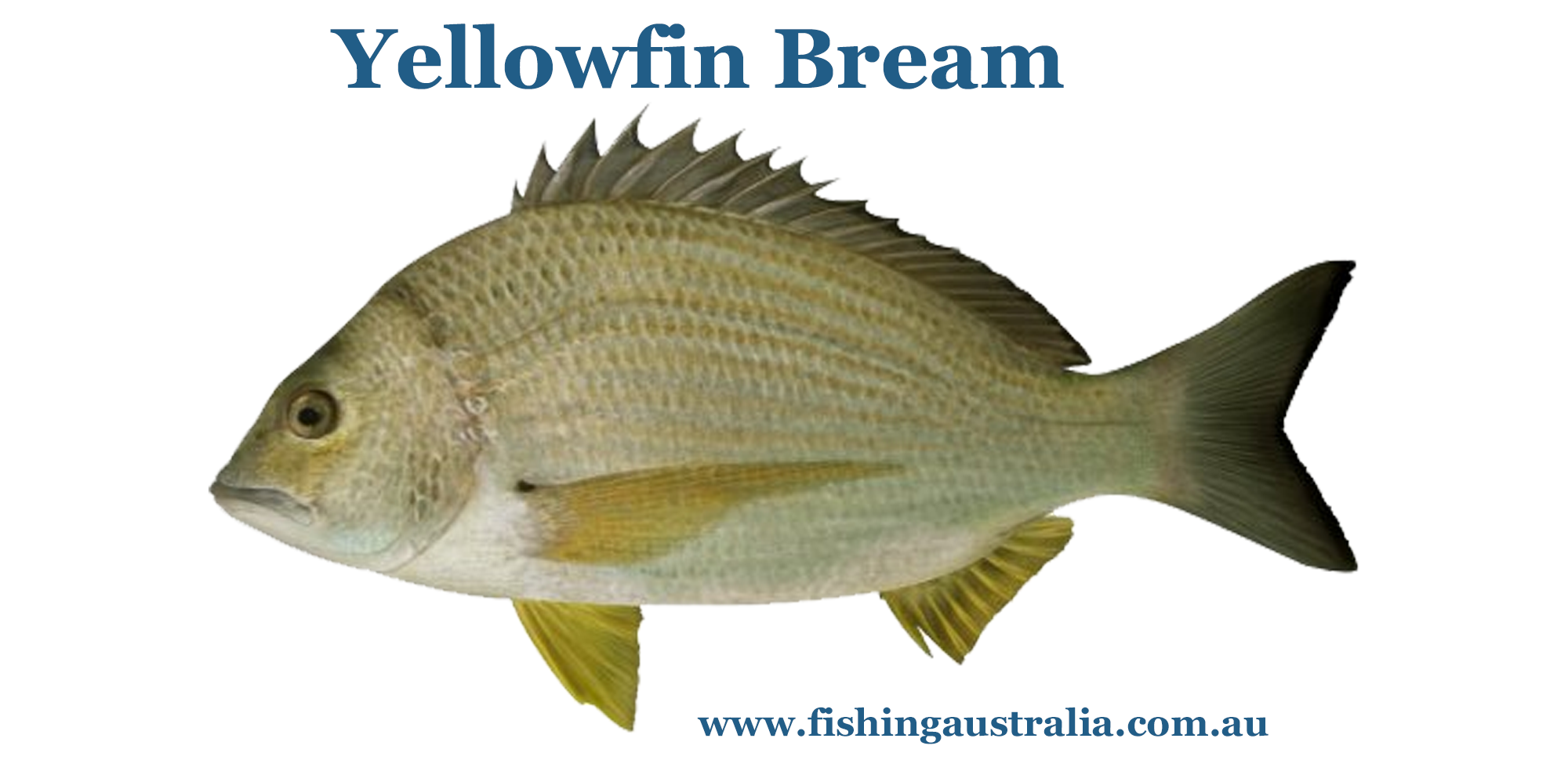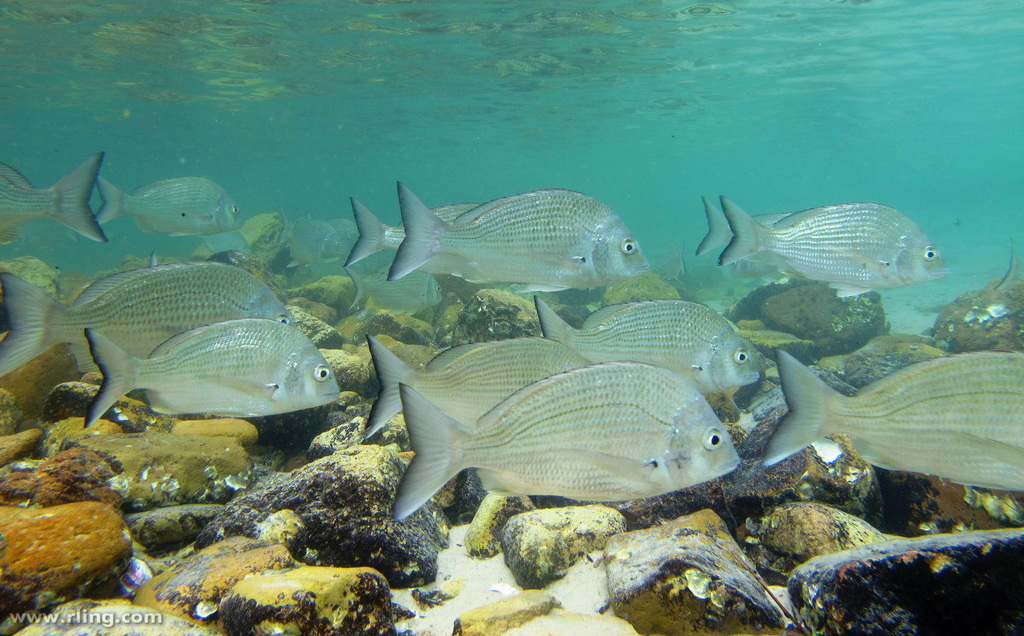Bream Fishing
Bream of one sort or another are caught in nearly every Australian estuary, not to mention along vast stretches of our ocean coastline and through many inshore areas. They’re an important and fascinating group of fish which are of interest to nearly all anglers.
Wherever they’re found. bream are popular with fishermen. This is hardly surprising when one stops to consider their good looks, fine fighting prowess. eating qualities and the levels of skill sometimes needed to catch them. Bream offer just the balance of challenge and reward which anglers love, and which is capable of turning the weekend fisho into a specialist angler.
There are actually several species of bream present in Australian waters. The most important Australian bream are the yellowfin or black bream of eastern waters (Acanthopagrus australis). the southern black bream (Acanthopagrus butcheri) and the pikey bream (Acanthopagrus berda) of tropical areas.
These bream are all relatively small fish averaging less than a kilo, with specimens over 2 kg being quite exceptional. Records for the two non-tropical strains of bream stand at around 4 kg but such examples must be regarded as extremely unusual.

Where to catch bream
While the southern bream is almost exclusively a fish of estuary and tidal lake systems, the eastern black bream and pikey bream both range through a variety of environmental niches from pure freshwater to estuaries, inshore mangroves. bays and harbours. In fact,‘ the eastern black bream is also common along ocean foreshores, beaches and even over deeper offshore reefs out to at least the 30-fathom mark.

What do bream eat?
All three types of bream are opportunistic feeders with a diverse diet. They have relatively small mouths lined with strong, peg~like teeth suited to crushing the shellfish and crustacea which they adore. They also possess the speed and guile to ambush prawns, shrimp, octopi, bottle squid and even small fish such as anchovy, whitebait, sprat, and pilchards.
The eastern black bream has a particular soft spot for oysters and mussels, which it is quite capable of tearing open with its strong little Jaws.
Southern bream rely more heavily on shrimp, marine worms, yabbies (nippers). crabs and the like, while the tropical pikey bream eats all of these as well as a fair proportion of baitfish and prawns. In addition. bream will occasionally graze on algae and weed, particularly in their juvenile stages. Despite the emphasis on naturally occurring food sources, bream are also quick to take advantage of any windfalls provided by man. They love ?sh scraps and offal, sandwich crusts. meat offcuts and even such odd fare as chicken bones!
This diversity in the diet of the bream tribe is re?ected in the range of baits which will occasionally account for these ?sh. In fact. it is hard to think of an offering which has not taken bream! A short list of the more common bream baits would have to include: prawns. worms, yabbies. mussels. abalone. crabs. cut fish ?esh, whole small fish. bread. cheese. steak, mullet gut. tripe. dough‘ and various cereal or ?our based concoctions called ‘pudding’ mixes.
All three types of bream will also strike at lures, especially small plugs and ?ies. though the pikey is a much more avid taker of artificials than its southern cousins and will even attack quite large lures intended for barramundi or mangrove jack. Unfortunately. the bream’s toothy little mouth and nipping style of attack do not always produce a good hookup on lures.
How big do bream grow? and How long do bream live?
Like snapper, to which they are related, bream grow slowly and live for quite a long time if given the chance.
During its first year of life, an eastern black bream only reaches a length of about 7.5 cm. The fish may not reach legal length (25 cm in New South Wales) until it is five or even six years old. and could well be into its teens before becoming a kilo-plus trophy!
Happily, bream lay huge numbers of eggs each year after reaching sexual maturity at a length of between 20 and 25 cm. Even though few of their offspring survive the first weeks of life, enough seem to achieve maturity to continue the existence of the species.
Certainly, there have been reductions in bream populations throughout much of their range, particularly in the numbers of above average size fish. However, even the most pessimistic observer could not claim that any one of the three species under discussion is threatened with extinction. Enough bream survive in even the hardest fished areas to provide sport for the dedicated angler, though the survivors may be extremely ‘educated’ and wise to the ways of man making them more difficult than usual to catch.
Best Bream Tackle
Bream are taken on all sorts of gear. from humble handlines to expensive baitcaster reels and graphite rods. The major constraints are that the line should be between about 1 and 6 kg breaking strain [ideally around 2 to 4 kg). the sinkers as light as possible and the hooks needle sharp and matched to bait size (usually between No 4 and 2/O size).
A very popular rig for bream through most of their range is based on a light 1.7 to 2.2-metre rod, small to medium threadline (spinning) reel and line of about 3 kg breaking strain. ln southern Queensland this combination is often replaced with a longer, softer 3 to 3.5 metre ‘sloppy ]oe’ style rod and shallow spooled sidecast reel. The outfits described are used by both shore and boat anglers, with the emphasis on slightly longer rods for bank fishermen and shorter models in boats.
Obviously, east coast anglers pursuing bream from the ocean rocks or beaches may need to use somewhat heavier tackle to cope with the conditions, though lines for bream should never be heavier than 6 or 8 kg.
Three or 4 kg breaking strain handlines wrapped on plastic casters, cork cylinders or even empty soft drink bottles make excellent additional lines for breaming in areas where long casts are not required. In fact, some very good estuary bream specialists use nothing but handlines.
A tackle box stocked with a couple of hook sizes between No 4 and 2/0. some No l2 or l4 swivels and a range of sinkers from the smallest sizes up to about 25 grams in weight may be all the terminals that an estuary bream fisherman needs.
A quality filleting knife, keeper net or cage and landing net round out the requirements of the estuarine and tidal lake bream chaser.

Recent Comments